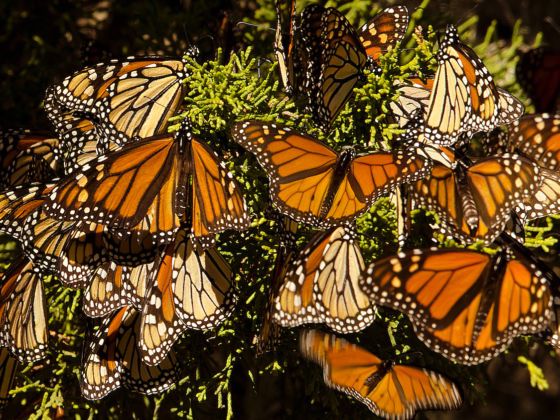NORTH AMERICAN MONARCHS are an amazing keystone species — they’re the only butterfly to travel up to 3,000 miles in mass migrations from Canada and the US to Mexico for winter.
But since 1990, 970 million monarchs have vanished.
That’s a 90% fall in two decades. Only about 30 million remain, with climate change and the depletion of milkweed said to be the main factors in the butterflies’ decline.
